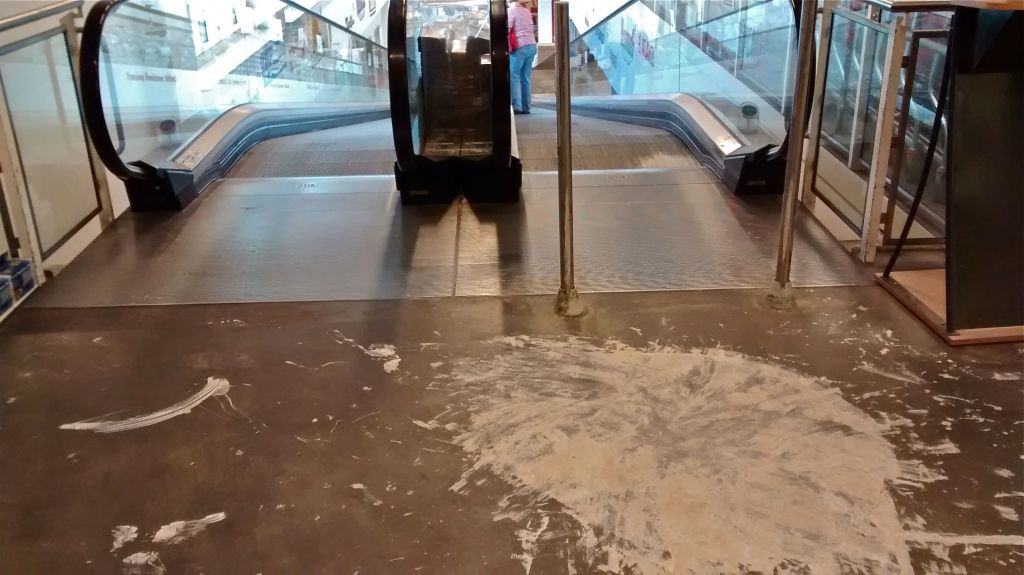Street Art, on City Streets

Bear with me and figure out the riddle. If you’ve ever moved out of a rented apartment here in Berlin, you know the answer already.
Walking down Hasenheide, you can spy aleatoric artworks, the result of spontaneous happenings that are dialogical and participatory, even coercive in character!

What is it? A battle scene: marshmallow foot soldiers obliterated by a battalion of cyclists.
No! Those partying giants up Jahnstraße have vomited watery pastis. Or done something very seedy on the sidewalk.

A clue: today, I am doing Schoenheitsreparaturen. Beauty repairs. Not on myself. It’s a contractual obligation and such a dumb idea: to get renters to restore the walls of their old apartment before the new renters move in. It passes on work, that should be borne by the owners, to the renter whose painting skills are unlikely to be professional. Perhaps the ritual renewing of the old apartment is therapeutic: a return to the moment of moving in, a bridging of arrival and departure. I think not: it simply adds more stress to an already stressful move. Welcome to Germany.

But the stressful move-out day can get even worse. There’s the requisite visit to Bauhaus (don’t get your hopes up: it’s the name of a hardware store, nothing to do with Walter Gropius) for supplies. On the return home journey, chance can play havoc on you and on the entire community, on all those shoe soles and car tires.

In Berlin, there is no need for Google Maps. You always know you are close to a Bauhaus, an Obi, a Hellweg, or another of Berlin’s chain hardware stores, because the nearby streets are covered with the remains of exploded paint containers. Notoriously too heavy for their handles, their covers inadequately sealed, a sudden homeward disaster might even happen inside the store premises. The results are surprising, and beautiful, but dangerous to vehicles and public space. The paint takes care of the rest, extending the moment of catastrophe, recording the time-lapse of passer-bys.

But not all of Berlin’s chance paint art is the result of a home renovator’s last straw. In Rosenthaler Platz, this art stunt was rather more orchestrated.
How’s that for putting the ‘street’ back into street art?
